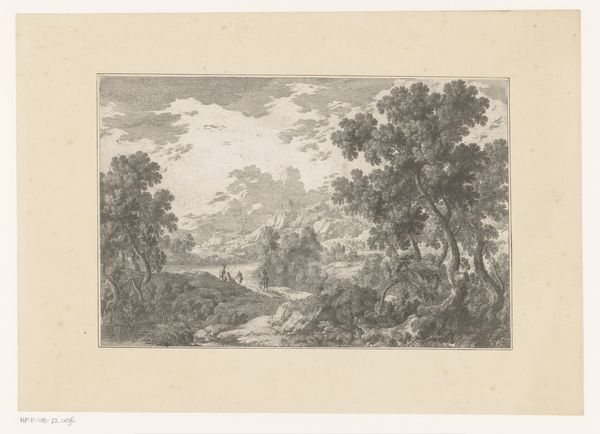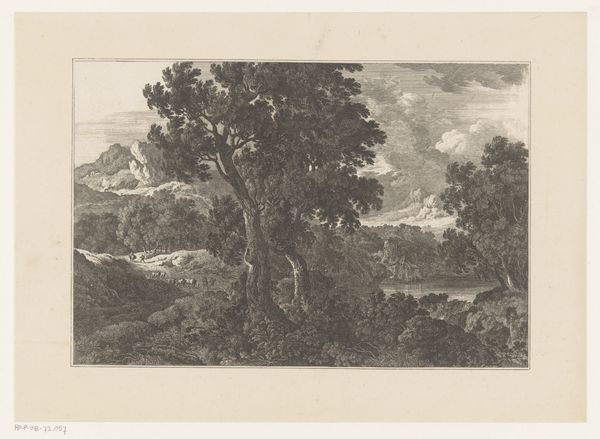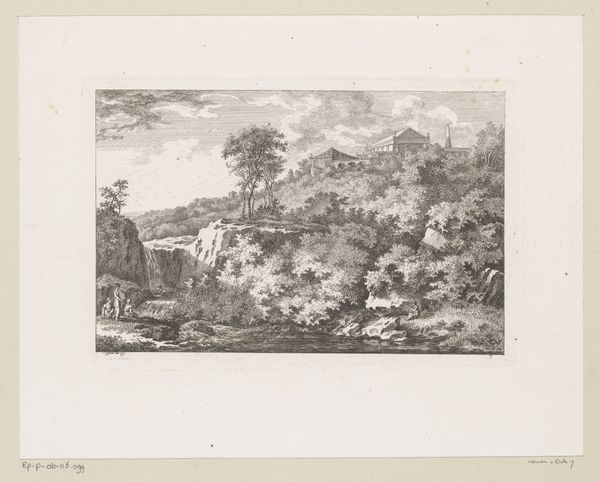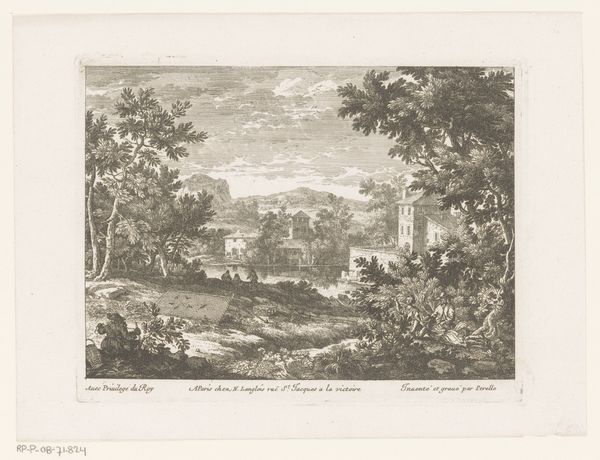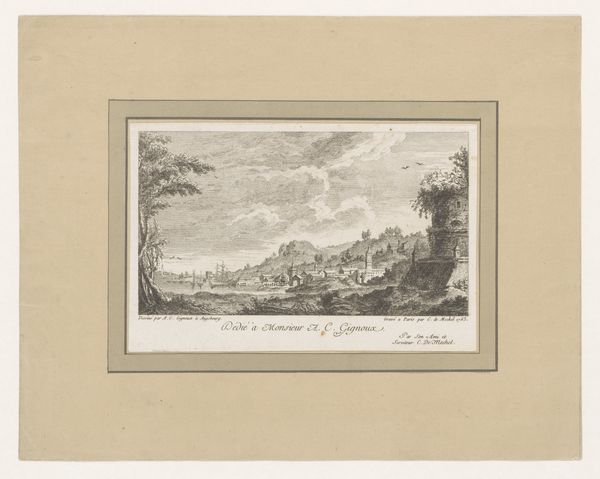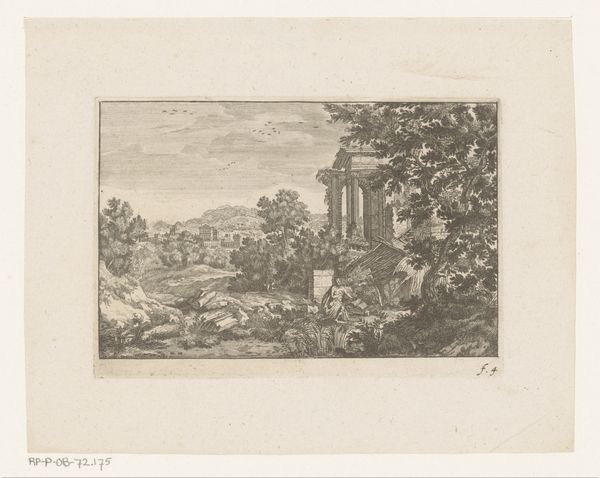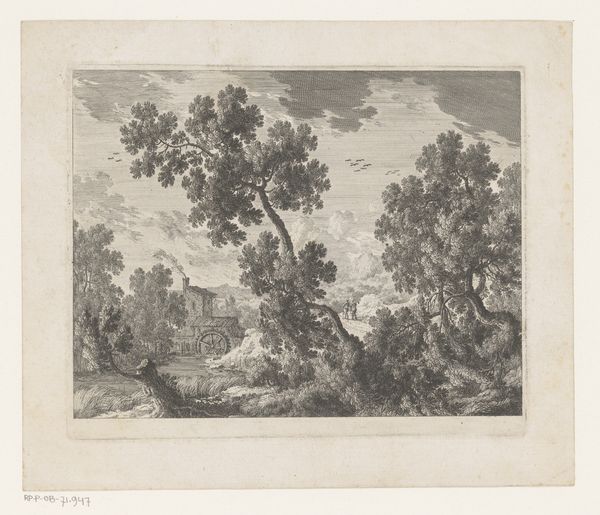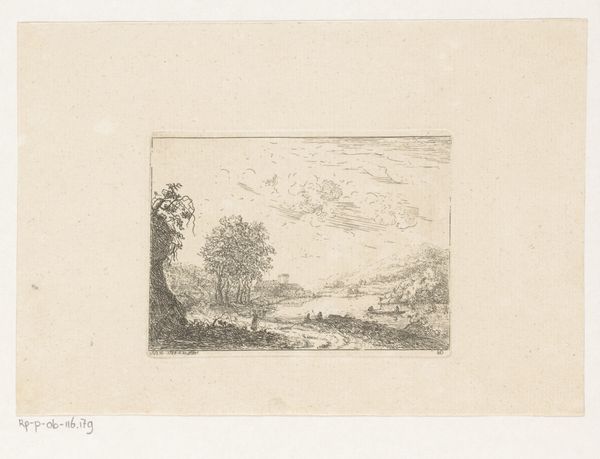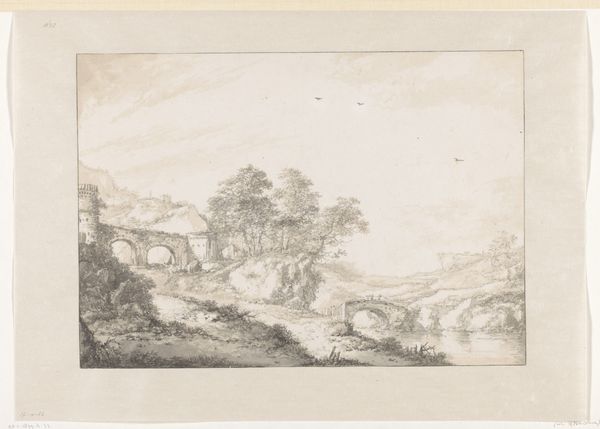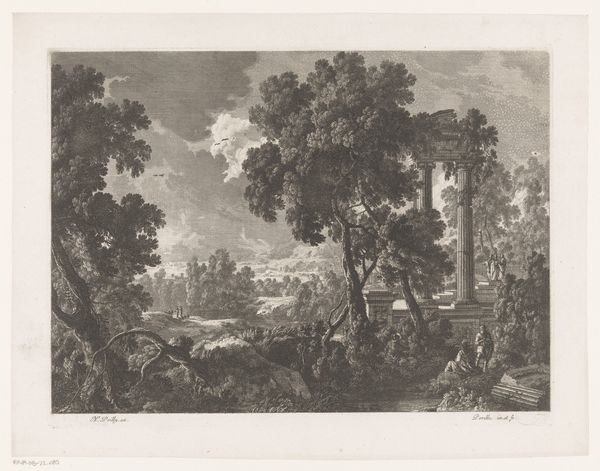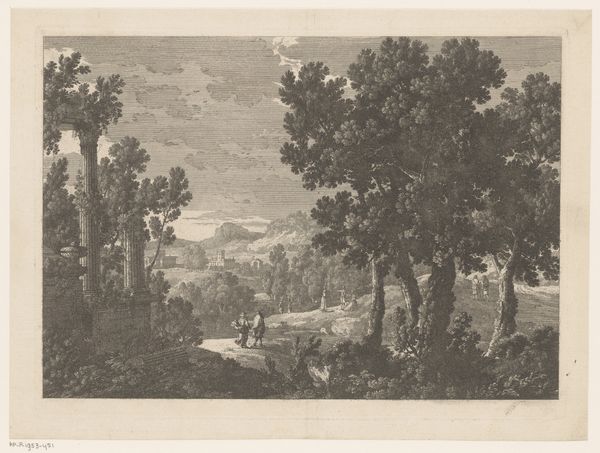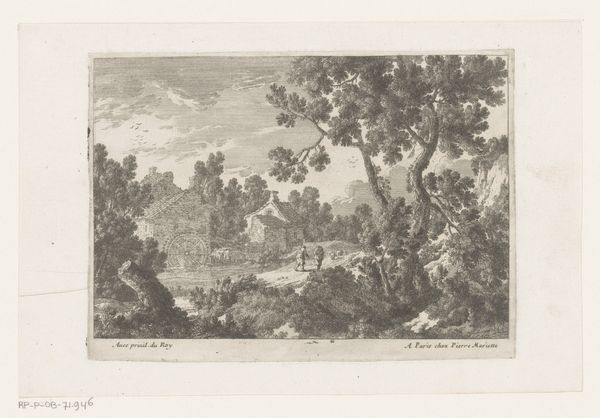
print, etching
#
baroque
# print
#
etching
#
landscape
#
cityscape
Dimensions: height 121 mm, width 174 mm
Copyright: Rijks Museum: Open Domain
Nicolas Perelle created this etching of a city in a valley in the 17th century. The printmaking process involves covering a metal plate with a waxy, acid-resistant layer, then scratching an image into that surface. Immersing the plate in acid bites away the exposed lines, which are then filled with ink and printed onto paper. Here, the fineness of the etched line allows for a great amount of detail. Note how Perelle uses hatching and cross-hatching to create tonal variation, mimicking the effects of light and shadow. The etched lines vary in depth and thickness, giving the image a sense of depth and texture. Printmaking, as a reproductive medium, was critical to the circulation of images and ideas in this period. Etchings like this made landscapes accessible to a wider audience, playing a vital role in shaping perceptions and knowledge of the world. It is an early form of mass media. By considering the labor and skill involved in etching, we can appreciate its important contribution to art history and visual culture.
Comments
No comments
Be the first to comment and join the conversation on the ultimate creative platform.
